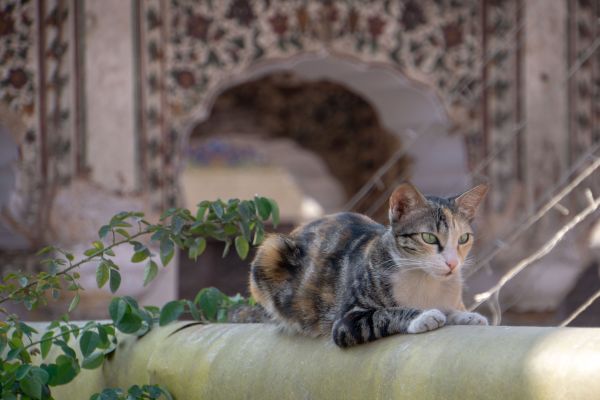How to Smell a Place: A Guide to Scent Mapping

Summer is the season of movement. As many of us travel, whether across countries or just to the next neighborhood, I’d like to offer a different way to mark the journey: not with photos or souvenirs, but with scent.
For years, I’ve made it a habit to map a place by its smells. This practice has changed how I travel. It slows me down. It sharpens my attention. And later, when memory fades, recalling scents brings everything back with astonishing clarity. I only have to imagine the honeyed aroma of orange blossoms to transport myself to Marrakesh. This memory then pulls on another one, and I delve into the fragrances of sun-warmed clay in a small oasis town, stone-roasted bread, and effervescent Moroccan cumin. In my mind, I travel again, going further and further.

Scent is the most ephemeral souvenir, but also the most faithful. Here’s how to begin building your own olfactory map.
Arrive With Your Nose Open
The moment you step off a train or out of an airport, breathe deeply. What do you notice first? Is it heat rising from the pavement? Eucalyptus trees? Engine fumes? Even if the smells of humanity in a crowded place may not be the ultimate moments to bottle, they are unique and memorable. Notice it all. Often, the air carries a “first impression,” the base note of a place.
Try this simple exercise: Close your eyes for one minute and do nothing but smell. Jot down a phrase or word: “petrol and seaweed,” “hot concrete,” “laundry detergent and cigarette smoke.”

Follow the Markets
Markets are treasure chests for scent mapping. In Odesa, I once smelled tomatoes so ripe and fragrant that I felt intoxicated. In Delhi’s Chandni Chowk, I followed my nose until I came to the Shah Jahan-era market full of sacks of chilies and marigolds.
Walk through a market slowly. Smell with curiosity, not judgment. What’s being sold? What’s cooking? What’s rotting? Most big markets also have spaces for cooked food, so it’s a great way to try local specialties and hone one’s olfactory skills.
Eat with Your Nose First
Discovering new foods is one of the pleasures of traveling. Before you eat, smell deeply. How does that peach smell? Does the local bread differ from what you eat at home? What spices are used? What herbs? What smells linger on your fingers after a meal?

Visit a Religious or Ritual Space
Churches, temples, cemeteries, shrines have specific smells: wax, dust, rosewater, incense, stone. In Poltava, I lit a candle in a dark church where my grandmother was baptized and inhaled beeswax and faded lilacs. In Brussels, I smell old wooden pews and white Madonna lilies. I enter each space wondering what scents cling to offerings. This sensory aspect lends another dimension to the experience.
Notice the Unexpected
One of my strongest scent memories from a recent visit to Paris wasn’t from a perfume boutique. It was from a laundromat that exhaled such a deep waft of white musk that I stopped in my tracks. In Sumy, a Ukrainian town on the border with Russia, it was the smell of Marc-Antoine Barrois’ Ganymede inside a bomb shelter turned art studio. Mixed with the scents of oil paint and chalk, it acquired a different impression for me. I also urge you to notice smells that clash or startle you. Memory often anchors to the strange.

Keep a Scent Journal
Write down one scent per day. You can include more, but one will suffice. Mention the place and your impressions. You need not write an essay, but a sentence of description will encapsulate the impression and preserve such scented memories longer.
Also, writing down observations teaches your senses to become more acute. You learn to notice more details in your environment and absorb them. The scent diary technique is what I teach to my perfumery and literature students. It’s an easy and effective way to hone your memory and attention span.
Examples from my recent scent diary:
May 27, Lviv – burned chocolate, coffee, cigarette smoke, rose petals sold at the market (for jam). Sweet and bitter. Contrasted.
July 26, Brussels – strawberries, a frites stand at the market that smelled of rancid oil, damp soil in the park. Japanese incense that smelled like star anise and sandalwood, almost Indian.
If you’re a perfume student, these short entries become part of your olfactory sketches and vignettes.

Gather Invisible Souvenirs
You don’t need to buy anything. But if you do, consider buying soap, spices, tea, or oils. Even dried herbs can evoke the trip long after you’re home. Once at home, keep them in small jars or boxes, as your portable museum of scents. Indian spice boxes, which have separate closed compartments, are perfect for this task.

Final Thought: To Smell Is to Belong
Scent mapping is not just about memory. It’s about being present. It’s a way to belong to a place, even for a moment. And later, when you no longer remember where you stored the photos or which year exactly you made the trip, it’s scent that will carry you back.
So wherever you go this summer, take your nose with you. Listen to it. Let scent become your most enduring souvenir.
What scents are shaping your summer? I’d love to read your entries from your own scent maps.
Photography by Bois de Jasmin
